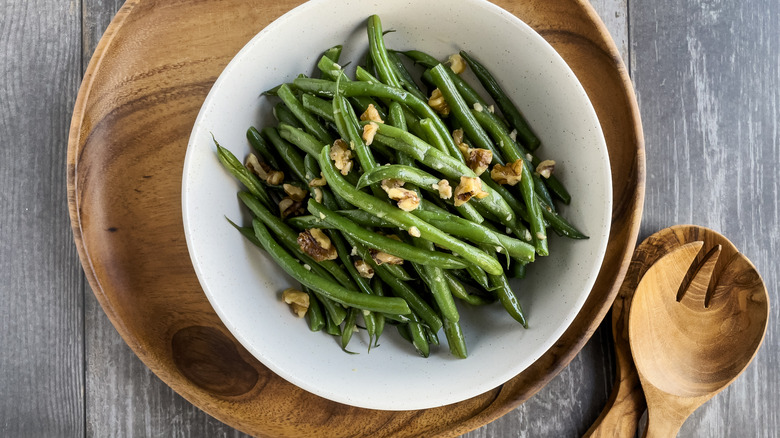
Momo Productions/Getty Images
Heart disease remains the leading cause of death not only in the United States but across the globe. While there are several forms of heart disease, the most common is coronary heart disease. Coronary heart disease develops when plaque builds up inside the arteries, narrowing them and restricting blood flow to the heart. If the blood supply is completely blocked, it can trigger a heart attack. Similarly, a stroke can occur when blood flow to the brain is interrupted.
Your diet plays a major role in preventing both heart disease and stroke. Eating more heart-healthy foods can help lower key risk factors such as high blood pressure and high cholesterol. Among the most beneficial foods for cardiovascular health are vegetables, thanks to their fiber content, low sodium levels, and abundance of protective nutrients.
Green beans, in particular, are an easy and versatile vegetable to include in your meals. One cup of raw green beans provides nearly 3 grams of dietary fiber, which not only supports digestion but also helps lower LDL (“bad”) cholesterol. Green beans are naturally low in sodium, and their 211 milligrams of potassium can help manage your blood pressure by balancing out the effects of sodium.
Fiber and potassium in green beans support heart health

Tom Werner/Getty Images
Fiber is an essential part of a heart-healthy diet, but one type of fiber plays a key role in lowering cholesterol. Soluble fiber works by binding to cholesterol in the digestive tract so it can be eliminated through your poop. The National Lipid Association recommends getting at least 5 grams of soluble fiber daily to help reduce your cholesterol levels. While a cup of cooked green beans provides 1.6 grams of soluble fiber, every bit adds up. A 2015 meta-analysis in Clinical Nutrition found that people who ate the most fiber had a lower risk of developing heart disease and a 17% lower risk of dying from it.
Green beans also offer nutrients that may help manage blood pressure. The DASH (Dietary Approaches to Stop Hypertension) diet emphasizes eating more vegetables, fruits, and whole grains while limiting sodium and saturated fat. It highlights the importance of getting enough potassium, calcium, and magnesium — three minerals that work together to support healthy blood pressure. While potassium often gets the spotlight, a 2008 article in The Journal of Clinical Hypertension suggests that potassium alone isn’t enough. Maintaining the right balance of calcium and magnesium is also key. A cup of green beans adds 37 milligrams of calcium and 25 milligrams of magnesium to help keep your blood pressure under control.
Healthy ways to cook green beans

Claudia Totir/Getty Images
The American Heart Association gives green beans its stamp of approval, provided they don’t accompany high-fat foods. You may serve green bean casserole at Thanksgiving, but swap the creamy soups and French-fried onions with Greek yogurt or oat milk (here’s a healthier green bean casserole recipe). Although canned green beans may be convenient, they’re pretty high in sodium. A cup of canned green beans packs 460 milligrams of sodium, which is 30% of the American Heart Association’s ideal limit if you’re looking to watch your blood pressure. Many brands have low-sodium or no-salt-added options, so check the labels.
While the American Heart Association suggests dipping fresh green beans in hummus, there are other healthy ways to enjoy green beans. Try drizzling some olive oil over green beans and let them roast for 15 minutes in a 425-degree oven. When it’s too hot outside to use the oven, you can sauté your green beans in olive oil, sesame seeds, and garlic. Avoid boiling green beans, however, because some of the nutrients will get lost in the boiling water.
Credit: healthdigest.com









